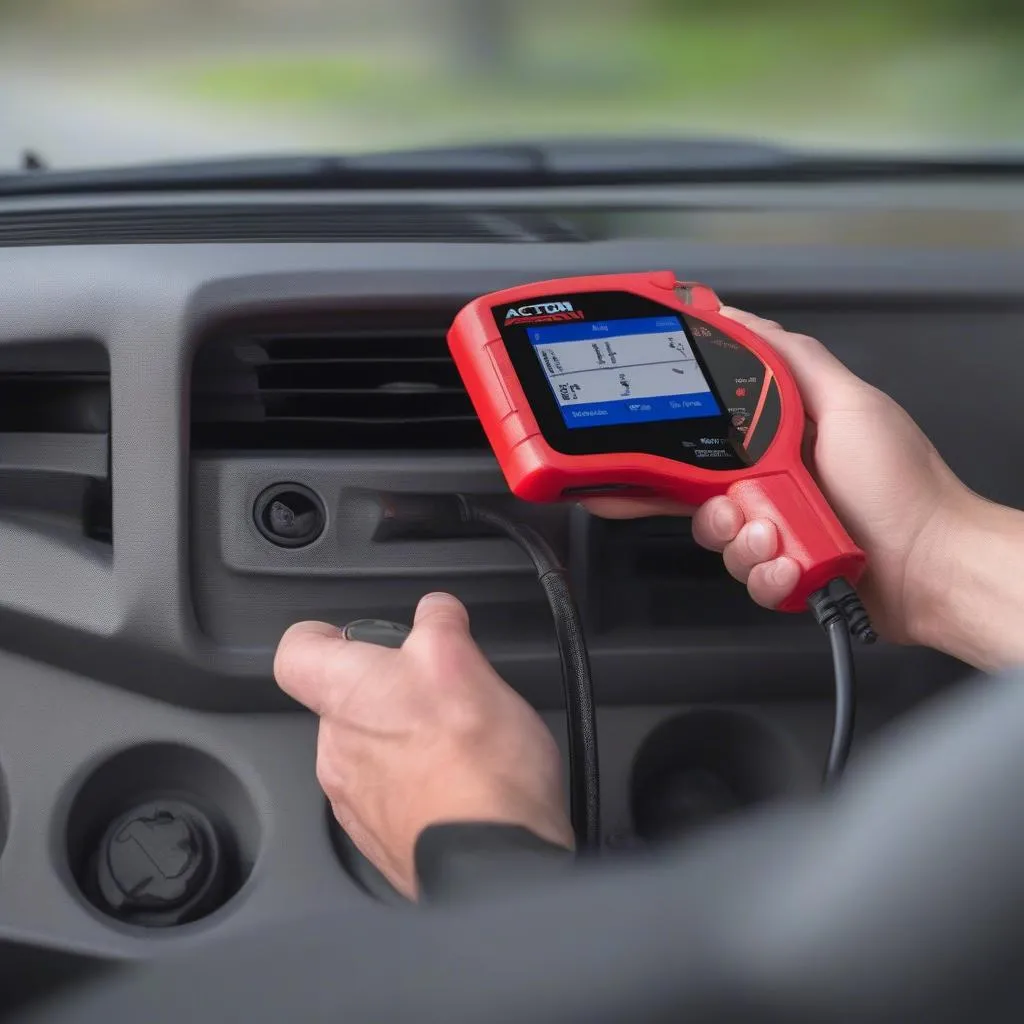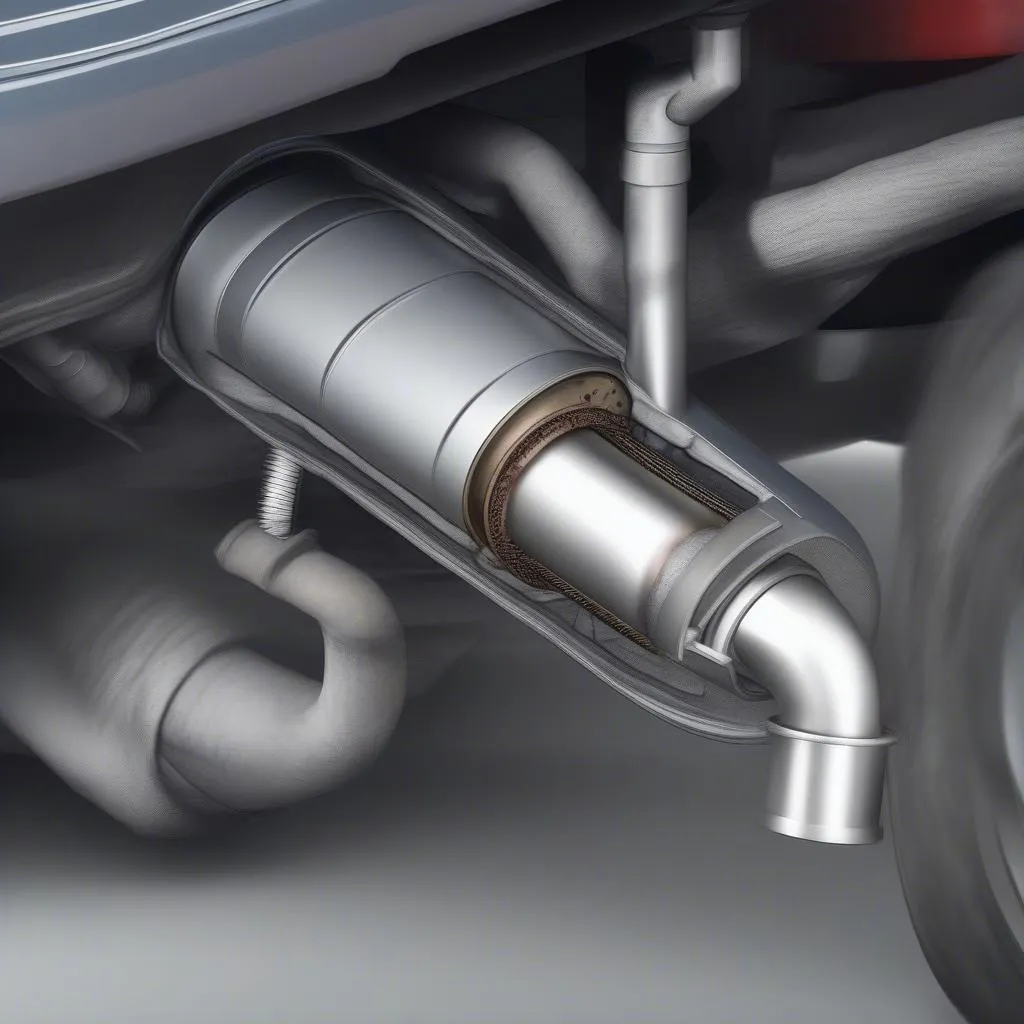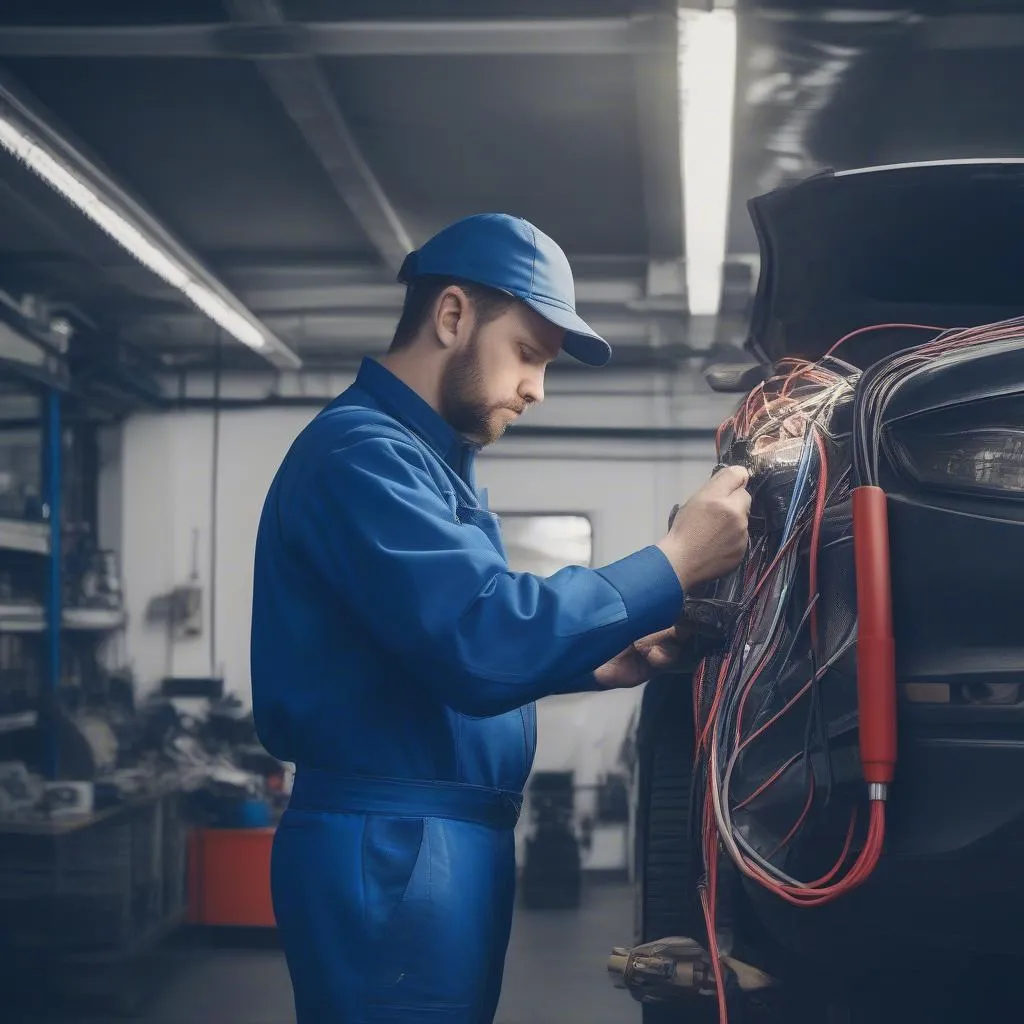Imagine this: you’re cruising down the Pacific Coast Highway in your sleek Audi A4, California sunshine warming your face. Suddenly, that dreaded check engine light pops up on your dashboard, casting a shadow on your perfect day. You pull over, grab your trusty Actron OBD II scanner, and it blinks back the cryptic code: P0130. What does it all mean?
Don’t hit the panic button just yet! This scenario is familiar to many car owners, and understanding what’s going on is the first step to getting back on the road. In this article, we’ll demystify the Actron OBD II scanner and the often-misunderstood P0130 code, empowering you to tackle car troubles head-on.
Decoding the Mystery: Actron OBD II Scanner and P0130 Code
What does an Actron OBD II scanner do?
Your car is a complex machine, constantly communicating with itself through a network of sensors and computers. The OBD II scanner is your window into this world, allowing you to “talk” to your car and understand what it’s trying to tell you.
Think of it as a translator between you and your car. When the check engine light illuminates, the scanner retrieves Diagnostic Trouble Codes (DTCs) like the P0130, which act as clues to pinpoint the issue.
What does the P0130 code mean?
The P0130 code specifically indicates a problem with the oxygen sensor (O2 sensor) in Bank 1, Sensor 1. This sensor, typically located before the catalytic converter, plays a vital role in monitoring the exhaust gases and ensuring the optimal air-fuel mixture for your engine.
A malfunctioning O2 sensor can lead to reduced fuel efficiency, increased emissions, and even damage to other engine components if left unaddressed.
Troubleshooting the P0130 Code
Common Causes and Solutions:
Several factors can trigger a P0130 code, ranging from simple fixes to more complex issues:
-
Faulty Oxygen Sensor: The most common culprit is a worn-out oxygen sensor. Regular wear and tear, exposure to high temperatures, or contamination can impact its performance. Replacing the sensor is usually the most effective solution.
-
Wiring Issues: Damaged, corroded, or loose wiring connections between the sensor and the Engine Control Unit (ECU) can disrupt communication and trigger the code. Inspecting and repairing the wiring harness is crucial.
-
Exhaust Leaks: Leaks in the exhaust system, particularly before the oxygen sensor, can introduce outside air and skew its readings. Identifying and repairing any leaks is essential.
-
Vacuum Leaks: Similar to exhaust leaks, vacuum leaks can also disrupt the air-fuel mixture, affecting the oxygen sensor’s readings. Locating and fixing these leaks is crucial for optimal engine performance.
Getting to the Root of the Problem:
While an Actron OBD II scanner can help you pinpoint the P0130 code, further diagnosis may be necessary to identify the specific cause.
For instance, you can use a multimeter to test the oxygen sensor’s voltage output or visually inspect the wiring harness for any visible damage. If you’re uncomfortable with more technical troubleshooting, consulting a qualified mechanic is always recommended.
Frequently Asked Questions about Actron OBD II Scanner and P0130:
Can I drive my car with a P0130 code?
While you might be able to drive for a short period, it’s not recommended. Ignoring the code can lead to further damage and potentially costlier repairs down the line.
How much does it cost to fix a P0130 code?
The cost varies depending on the underlying cause. A simple oxygen sensor replacement could range from $100 to $300, while more complex repairs like wiring harness replacement could cost significantly more.
Can I replace the oxygen sensor myself?
If you’re comfortable with basic car maintenance, replacing an oxygen sensor is a manageable DIY project. However, if you’re unsure, seeking professional help is always a safe bet.
Similar Codes and Issues:
The P0130 is just one of many codes your Actron OBD II scanner might reveal. Other related codes include:
- P0131: Oxygen Sensor Circuit Low Voltage (Bank 1, Sensor 1)
- P0132: Oxygen Sensor Circuit High Voltage (Bank 1, Sensor 1)
- P0134: Oxygen Sensor Circuit No Activity Detected (Bank 1, Sensor 1)
- P0135: O2 Sensor Heater Circuit Malfunction (Bank 1, Sensor 1)
Encountering any of these codes suggests further investigation into your oxygen sensor system is needed.
Seeking Expert Help for Your Car Troubles?
Understanding the language of your car can save you headaches and costly repairs down the road. However, diagnosing and fixing car problems can be complex. If you’re ever unsure or uncomfortable tackling car repairs yourself, don’t hesitate to seek professional help.
For expert assistance with diagnostic tools, software installation, or any car repair needs, reach out to our team of specialists at Whatsapp: +84767531508. We’re available 24/7 to provide support and guidance.
Keep Your Car Running Smoothly
Your car is an investment, and taking care of it proactively ensures it runs smoothly for years to come. Regular maintenance, prompt attention to warning signs like the check engine light, and utilizing tools like the Actron OBD II scanner are essential for a happy and healthy car ownership experience.
Have you experienced the P0130 code or other car troubles? Share your experiences and questions in the comments below!
Looking for more car maintenance tips and insights? Check out these related articles:
- Actron OBD II Scanner: Your Ultimate Guide to Understanding Car Codes
- Check Engine Light On? What You Need to Know About OBD II Scanners
Don’t let car troubles ruin your day. Empower yourself with knowledge and keep your car running its best!
 car diagnostic tool
car diagnostic tool
 car exhaust system
car exhaust system
 car repair shop
car repair shop